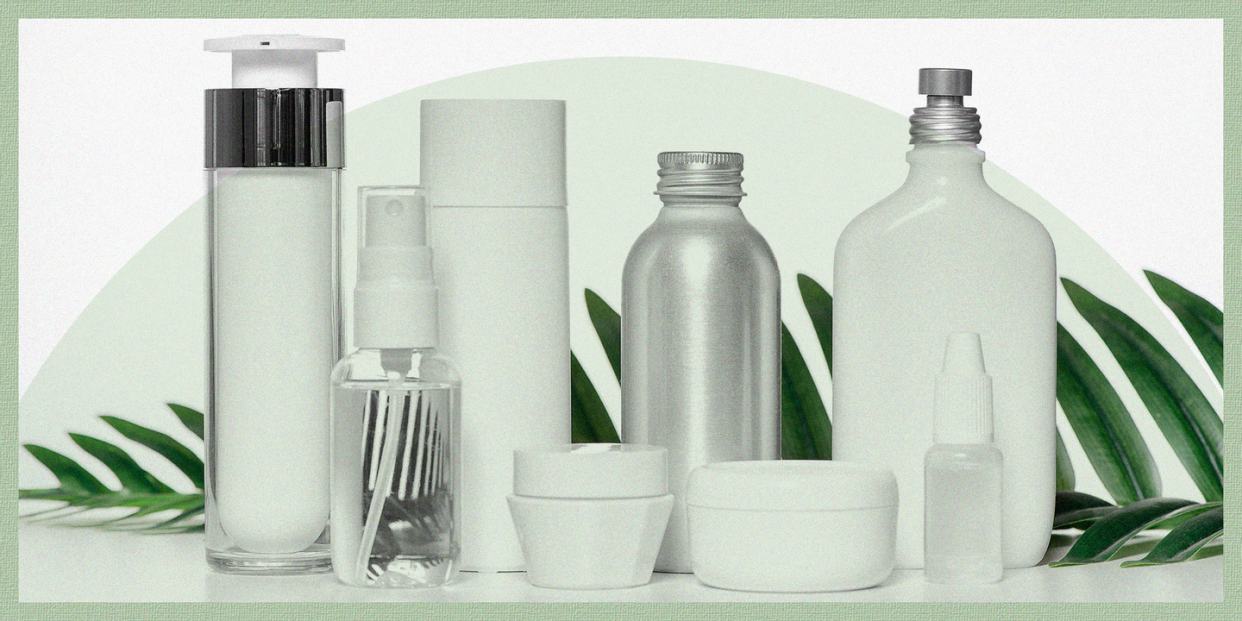Beauty Packaging is an Environmental Nightmare

Consider an average deodorant tube. Packaged in a hard plastic case, your deodorant contains lots of tiny plastic components for twist-ability that are not recyclable. This means that out of the all deodorants sold in the U.S. last year, most of them were tossed into the trash, with many of them ending up in the ocean. (Yes, garbage often ends up in sewers, rivers, and the ocean on its way to the landfill.)
The result? Whales with bellies full of plastic, vanishing coral reefs, and a patch of trash three times the size of France floating in the middle of the Pacific Ocean. Plastic waste is so pervasive that it has been found at the furthest depths of the ocean, and as plastic containers break down, tiny plastic fragments invisible to the naked eye (microplastics) end up in waterways and eventually, into the very fish we eat.
Still, the plastic containers filling your bathroom cabinet and makeup bag are not the only troublemakers. It’s the ingredients inside the bottles that are also wrecking havoc with the environment. From glitter, which is often made from plastic and washed down the drain, to face wipes, which are virtually indestructible, to the 14,000 tons of sunscreen collecting in the world’s reefs each year, the beauty industry’s environmental footprint is having long-term ramifications.
Take sunscreen. Oxybenzone and octinoxate, two of the most common sunscreen ingredients, are toxic for coral reefs. Avobenzone, a common substitute for oxybenzone, could be just as dangerous. Experts estimate that 90 percent of all reefs will be dead by 2050 unless we ban these sunscreens altogether.
As for ingredients like parabens and sulfates, well, most chemicals that are washed down the drain are unable to be filtered out in treatment plants, so they end up in our waterways, in our tap water, and eventually the ocean—an important point, considering American women use an average of 12 personal care products, each containing 168 different chemicals.

We Can't Recycle Out of This Problem
You’ll notice that your serums and moisturizers are often kept inside a little bag, which is inside a colored light-protectant bottle, with a special pump and applicator. Most of these different parts (especially colored plastic, along with pumps, which usually contain a metal spring) are considered “non recyclable.”
While companies like TerraCycle are changing the game by recycling the "non-recyclable" (from coffee capsules to plastic gloves to toothbrushes and deodorant cases, TerraCycle can recycle almost any form of waste), it’s important to focus on buying brands already committed to clean, sustainable practices.
“The packaging thing has become such a hot button issue,” says Follain founder, Tara Foley. “However I want people to remember that it's the ingredients inside the packaging that can make a huge, huge impact very quickly as well. It’s critical to ensure that the whole product, not just the packaging, is clean.” She notes that bio-based plastics and biodegradable plastics, often viewed as green alternatives by consumers, have environmental drawbacks of their own.
Indeed, the process in which plant ingredients in your natural beauty products are farmed can affect local communities and ecosystems, as well as the product’s overall carbon footprint. With conventional beauty brands, their packaging might taut recyclability, but the catastrophic environmental impact of the chemicals used to make their products could potentially be worse. It’s also important to note that most beauty products use water in manufacturing and as a main ingredient (usually under the label of “aqua”). Water is a precious energy resource that we need to protect as we tackle climate change.

The Solution
Try an eco-audit of your own daily beauty and grooming regimen. Assess the number of products you buy and how much waste is produced as a result. The first step is to contact Terracycle to find out how to properly recycle the products you are currently using. (To make the process easier for yourself, keep a separate bin for recycling in your bathroom.)
Loop, a new innovation from TerraCycle inspired by the old milk man delivery and pick-up system, has already seen companies like P&G, Unilever, and The Body Shop sign onto the pilot program which recently launched in New York, New Jersey, Washington D.C., Pennsylvania, and Maryland. If you need more incentive, Credo offers store credit when you bring in empty bottles.
The next step is to slowly start replacing your products with sustainable alternatives. You may have seen brands like Meow Meow Tweet and By Humankind, which offer products like refillable deodorant and mouthwash tabs. You can also switch to reusable cotton pads, refillable makeup from brands like Kjaer Weiss, and package-free products like shampoo bars—all of which significantly cut down plastic and chemical waste. Oh, and ditch the single-use face mask.

You Might Also Like